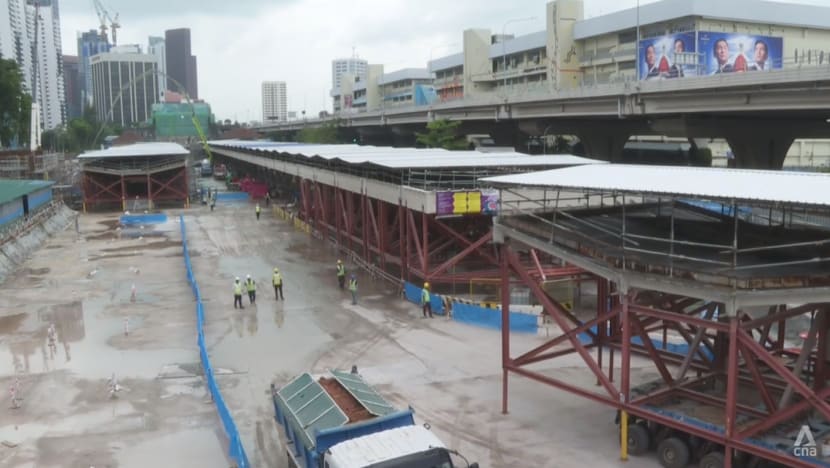Blending the old and new: Former Tanjong Pagar Railway Station’s canopy structure to make a comeback
The design of the Cantonment MRT station has taken into consideration the original design of the historic railway station, said LTA.

The platform canopy structures of the former Tanjong Pagar Railway Station are expected to be fully reassembled by next year.

This audio is generated by an AI tool.
SINGAPORE: The platform canopy structure of the former Tanjong Pagar Railway Station is expected to be fully reassembled by next year.
It was previously cut up and put aside to make way for MRT works.
This comes as the new Cantonment MRT station, built under the site, is on track to open in 2026. It is part of a project to close the loop between Harbourfront and Marina Bay, by adding three new MRT stations on the Circle Line.
About 70 per cent of the reinstatement has been completed to date, the Land Transport Authority (LTA) said on Friday (Mar 8).
Each time, one to two panels were brought on-site from a storage space about 700m away. All 63 pieces will be joined to make up a 580m shelter linked to the MRT station.
The design of the Cantonment MRT station has taken into consideration the original design of the historic railway station, said LTA senior project engineer Zoey Zheng Ye.
“With the integration of both the new and old train stations … the commuters will get to enjoy a unique blend of the past and present reflecting the rich historical value of the national monument,” she said.
THE PROCESS TO REINSTATE CANOPY STRUCTURE
The overall process was not an easy one, said Mr Wong Chung Wan, technical director at MAEK Consulting, the material specialist that has been advising the restoration project.
It took the restoration project team almost a year to study how it could be done.
“The sheer size of the canopy itself … is one of the biggest challenges because it's very heavy (and) huge,” said Mr Wong.
He added that the team had to be careful about where to cut the canopy to prevent damage to the structure.
“The other challenge is because the Shanghai plaster was exposed to the weather for so long, it was very, very dirty, full of stains. We had to clean them. (The) matter of cleaning has to be taken with great care because otherwise, you will cause more damage to the Shanghai plaster, more erosion,” he said. Shanghai plaster refers to the finish on the structure, a type of decorative concrete.
Retaining the original look was another challenge.
"It's very, very difficult to match, number one, the colour, and number two, the texture. Any new ones we make will look very clean, very new. So there has to be a balance that needs to be handled in order to get a good match,” he said.

“AN ENGINEERING FEAT”
The engineering aspects of moving panels of such size and weight are also complex. With the supporting steel frame, each panel weighs about 60 tonnes.
Connecting them back requires steel bars.
"We think that it is quite an engineering feat, not something that is commonly done and if you can pull it off, then probably it's one of the few. It is a demonstration of the engineering capabilities for local specialists, professionals, contractors,” said Mr Wong.
No reconstruction works were required, as necessary precautions were taken to ensure the panels were maintained in their original condition, LTA said.
For instance, a zinc sheet was used to protect them against harsh weather.
Restoration of the main building is expected to be carried out over the next few years, and the public is invited to give their ideas on how the station can be developed as part of the Urban Redevelopment Authority's Long-Term Plan Review.
















